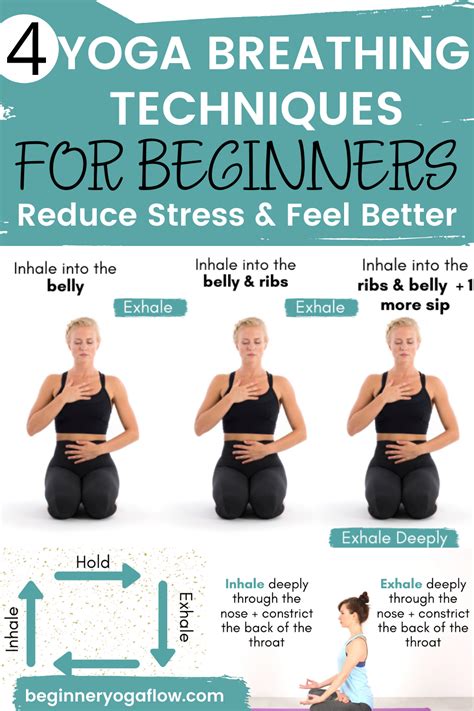Transformative Yoga Breathing Techniques for Effective Stress Relief
In today’s fast-paced world, stress has become a daily companion for many. One powerful and natural solution to combat stress is the ancient practice of yoga breathing techniques. These techniques, known as Pranayama in yoga, can serve as an accessible and potent tool to reduce stress, balance emotions, and promote mental clarity. This comprehensive guide explores key breathing methods, their historical roots, current applications, and practical steps to incorporate them into everyday life.
Introduction
Yoga breathing techniques, or Pranayama, have been a core part of yogic practices for thousands of years. These methods work by regulating the breath, which in turn calms the nervous system, reduces the heart rate, and encourages relaxation. Breathing not only sustains life but also plays a critical role in stress management. In this article, we’ll explore various breathing techniques, provide historical and modern insights, and discuss how these techniques can be applied practically for stress relief.
Key Concepts
- Pranayama: The control of breath, central to yoga practice.
- Sympathetic Nervous System (SNS): Activates the body’s “fight or flight” response to stress.
- Parasympathetic Nervous System (PNS): Responsible for the body’s “rest and digest” state, helping it calm down.
- Diaphragmatic Breathing: A technique that engages the diaphragm to encourage deeper breaths and relaxation.
- Nadi Shodhana: Alternate nostril breathing that balances the mind and body.
- Ujjayi Breathing: A calming breath technique that involves gentle constriction of the throat.
Historical Context
Breathing practices have ancient roots, dating back to the earliest forms of yoga. The concept of Pranayama first appeared in texts like the Yoga Sutras of Patanjali, a foundational guide on yoga philosophy and practice. Originally, these techniques were employed not only for physical benefits but also for spiritual enlightenment. The Vedic and Upanishadic traditions viewed breath control as a means to connect the individual with the universal consciousness.
In modern times, while the spiritual aspects remain important for many, the primary focus of these breathing techniques has shifted toward physical and mental well-being. Researchers have found that these methods can be powerful tools for stress reduction, making them accessible to people across various lifestyles and cultures.
Current State Analysis
Today, yoga breathing techniques are widely studied and applied in multiple disciplines, from psychology to medicine. Scientific research has demonstrated the ability of controlled breathing to activate the parasympathetic nervous system, which reduces the production of stress hormones like cortisol. In therapeutic settings, these techniques have proven beneficial for individuals suffering from anxiety, depression, and post-traumatic stress disorder (PTSD).
Popular methods like Nadi Shodhana, Ujjayi Breathing, and Kapalabhati have been integrated into stress management programs in workplaces, schools, and even hospitals. Despite their popularity, not all breathing techniques are suitable for everyone, making it crucial to approach them with caution and awareness of personal limitations.
Practical Applications
Incorporating yoga breathing techniques into daily life doesn’t require significant time or effort. Below are step-by-step guides to some key breathing techniques that can be easily practiced:
1. Diaphragmatic Breathing
- Sit or lie in a comfortable position, placing one hand on your chest and the other on your abdomen.
- Inhale deeply through your nose, allowing your abdomen to rise while your chest remains relatively still.
- Exhale slowly through pursed lips, noticing your abdomen fall.
- Repeat for 5-10 minutes.
2. Nadi Shodhana (Alternate Nostril Breathing)
- Find a comfortable seated position and use your right thumb to close your right nostril.
- Inhale deeply through your left nostril.
- Close your left nostril with your ring finger and release your thumb from the right nostril, exhaling fully.
- Inhale through the right nostril, then switch again, exhaling through the left nostril.
- Continue alternating for 5 minutes.
3. Ujjayi Breathing
- Sit in a comfortable position and take a deep breath in through your nose.
- Slightly constrict the back of your throat as you exhale slowly through your nose, creating a soft “ocean” sound.
- Continue this breath for 5-10 minutes, focusing on the rhythmic sound and pace.
Case Studies
| Case | Problem | Solution |
|---|---|---|
| Corporate Employee | High-stress job environment, difficulty focusing, increased anxiety. | Implemented daily Ujjayi breathing during breaks, leading to better focus and reduced anxiety. |
| College Student | Pre-exam stress, difficulty sleeping. | Practiced Nadi Shodhana before bed, significantly improving sleep quality and reducing stress. |
| Senior Citizen | Chronic stress from caregiving duties. | Engaged in diaphragmatic breathing every morning, improving mood and reducing fatigue. |
Stakeholder Analysis
- Healthcare Providers: Interested in integrating breath control into treatments for anxiety and hypertension.
- Corporate Employers: Want to incorporate stress-relief techniques into wellness programs to improve productivity.
- Yoga Instructors: Seek to diversify their teaching with scientifically backed breathing methods.
- Students: Aim to reduce test anxiety and improve mental clarity through structured breathing exercises.
Implementation Guidelines
To successfully integrate these techniques into everyday routines, individuals should:
- Start with short, manageable sessions (5-10 minutes) to build consistency.
- Practice in a quiet environment to minimize distractions.
- Combine breathing exercises with mindfulness or meditation for enhanced benefits.
- Adjust techniques according to personal comfort and any existing health conditions.
- Use reminders or schedule breathing exercises at consistent times daily.
Ethical Considerations
It’s essential to recognize that while yoga breathing techniques are accessible to most, there are ethical concerns surrounding their cultural appropriation. These practices are rooted in centuries of Eastern tradition and spirituality, and care should be taken to respect their origins. Additionally, for individuals with respiratory or cardiovascular issues, some techniques may pose risks and should be performed under professional guidance.
Limitations and Future Research
While the benefits of yoga breathing techniques are well-documented, more research is needed to understand their long-term effects across diverse populations. Studies should focus on the physiological impact of prolonged practice, especially in individuals with pre-existing conditions. Additionally, while breathing exercises are effective in reducing stress, they should not be viewed as a replacement for comprehensive mental health treatment where necessary.
Expert Commentary
As an expert in the field of stress management, it is clear that yoga breathing techniques offer an incredibly effective, low-cost, and accessible solution for mitigating stress. However, individual experiences with these techniques vary, and it’s essential to approach them with an understanding of personal needs and limitations. Combining scientific rigor with traditional wisdom, yoga breathing continues to be a powerful tool in modern wellness practices.








